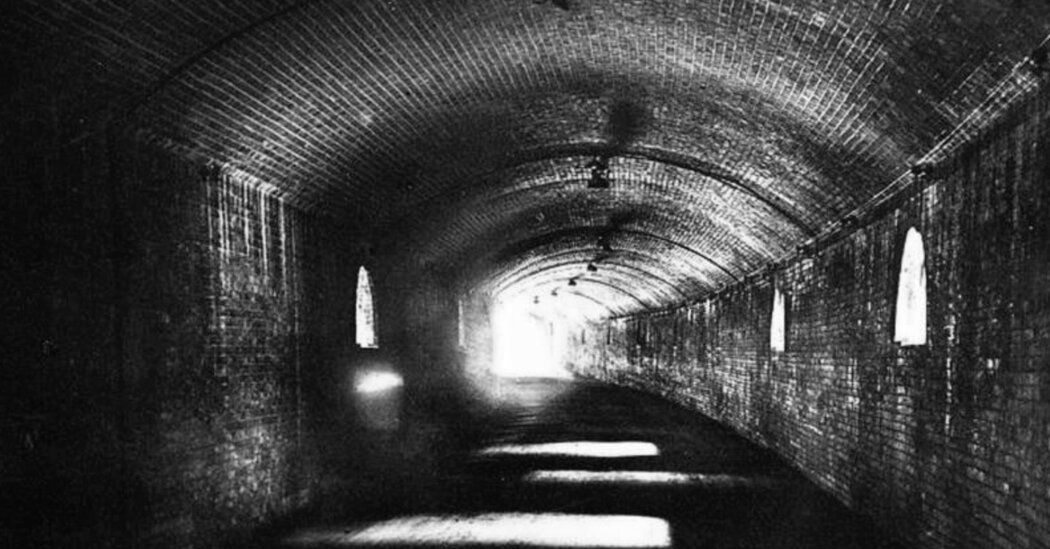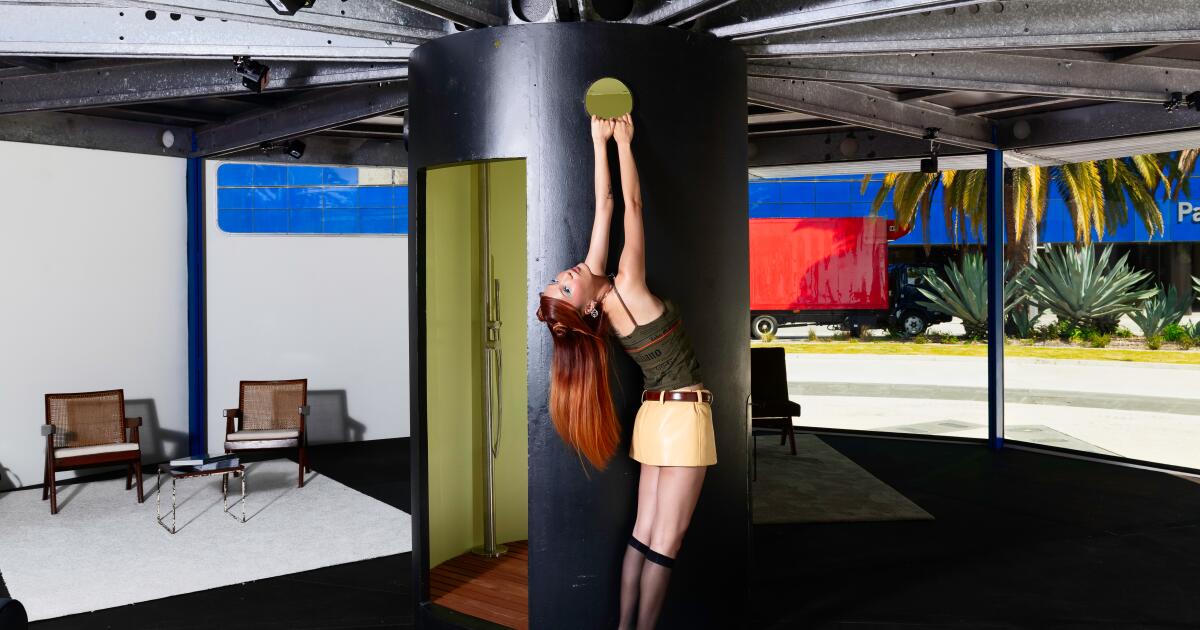A Virginia woman who spent more than a year digging a tunnel under her home and documenting the project on TikTok was recently detained by her city officials after the popularity of her account drew attention to her project.
Spending hours lifting dirt and stones from the ground may seem like an unusual pastime, but it has a history: long-time tunnel buffs include the Fifth Duke of Portland, who in the 19th century built an underground ballroom on his estate and , more recently, the so-called mole man of London, who spent 40 years tunneling before being discovered.
Here's a look at their clandestine activities and what happened after they came to light.
A TikTok tunneler
Since 2022, TikTok creator @engineer.everything has been documenting her attempt to build an emergency shelter under her house.
The TBM, known as “Tunnel Girl” by some online fans, said in a phone interview this month that her tunnel had a 30-foot entrance and a main chamber 22 feet underground. She spoke on condition of being identified by her online nickname, Kala, for privacy reasons.
He said he started the project because he wanted to do something that was “technically challenging and required me to learn a lot of new skills.”
I wasn't prepared for the attention the online project would receive. “I was hoping to share it with a small group of people interested in technical and engineering challenges, and I really didn't intend for it to go mainstream,” she said.
Kala's work stopped in December, when the city where she lives, Herndon, Virginia, issued a stop-work order. She said she has since submitted permit applications and plans to the city and is waiting to hear back.
In a statement, the city of Herndon said a site inspection was conducted on Dec. 7, a few weeks after a round of media attention that included a Bloomberg op-ed and an NBC article about the tunnel. . “The city is working with the property owner to correct any violations and ensure the property is safe and up to code,” the statement said.
But Kala is far from the first person to capture the world's attention with an unregistered tunnel project.
A Canadian mystery
An international media frenzy ensued in 2015 when a more than 33-foot-long tunnel was found north of Toronto with tools, empty bottles and food containers inside. Toronto police investigated the tunnel for more than a month but could not find answers and asked the public for help. Speculation about drug labs and terrorist plots followed, but ultimately the explanation included nothing illicit.
Just over a week after police requested information, the digger confessed in an interview with The Toronto Sun. Elton McDonald, a 22-year-old construction worker from a neighborhood near the tunnel, said he built it. “It was something he always wanted to do,” he said.
The tunnel filled up quickly. It was located on property owned by Toronto and the Region Conservation Authority, but under a management agreement with the City of Toronto, which maintains the property on behalf of the conservation authority.
The conservation authority, a nonprofit organization responsible for conserving and managing more than 1,338 square miles (3,467 square kilometers) of land and water resources in the area, said in a statement that Toronto police “took the necessary steps to fill in the tunnel.” “The nonprofit 'was not involved in this process,'” he said.
Not all local authorities are quick to fill in a tunnel when they find one.
After Baldassare Forestiere arrived in the United States from Sicily in the early 20th century, he built an extensive complex of underground rooms and gardens at his home in Fresno, California.
Forestiere created each room while working without written plans, according to the website for the complex, Forestiere Underground Gardens, which is now a tourist attraction. Mr. Forestiere dug for 40 years and planted orange, lemon and grapefruit trees in his underground network.
His hobby was celebrated by the state of California, which registered the complex as a historical monument in 1978, calling it a monument “to a creative and individualistic spirit without limits of conventions.”
A mole man from London
An east London man dubbed the “Hackney Mole Man” by the British press spent 40 years digging a network of tunnels beneath his home before the local government obtained a court order in 2006 to stop the digging and fill in the holes. holes with cement, according to the Guardian.
William Lyttle, who died in 2010 after being evicted from the house, told The Guardian that he had first tried to dig a cellar and then moved on. “Tunnel construction is something that should be talked about without panicking,” he said.
An eccentric entomologist
In September 1924, a truck sank into the ground near Dupont Circle in Washington, revealing tunnels created by Harrison G. Dyar, an entomologist.
Dr. Dyar said he had begun digging the tunnels in 1905 or 1906, prompting the New York Times to declare “Tunnels Dug by Moth Lovers.”
“I did it for exercise,” Dr. Dyar said at the time. “Digging tunnels after work is my hobby. “There's really nothing mysterious about it.”
Dr. Dyar dug the tunnels when he was honorary custodian of lepidoptera, or moths and butterflies, at the United States National Museum (now known as the National Museum of Natural History). He also had two families that lived in separate houses, each of which had tunnels. Contrary to urban legend, the two sets of tunnels were not connected, said Marc Epstein, an entomologist and author of the book “Moths, Myths and Mosquitoes: The Eccentric Life of Harrison G. Dyar, Jr.”
In the decades since the discovery of the delivery truck, one set of tunnels has been blocked and the other was demolished during construction, Dr. Epstein said.
A digging duke
In the 19th century, William John Cavendish Scott Bentinck, the fifth Duke of Portland, built 2.75 miles of tunnels and an underground ballroom on his estate, Welbeck Abbey, near Sheffield in England, according to an exhibition at the Harley Gallery at Welbeck Estate.
He was known as the “digging duke” and rumors circulated that he had other unusual habits, including always wearing three pairs of socks, eating only roast chicken and communicating exclusively by letter through his bedroom door, according to the exhibit.
Today, the tunnels are not open to visitors. A representative for Welbeck Estate did not respond to questions about its current situation.












